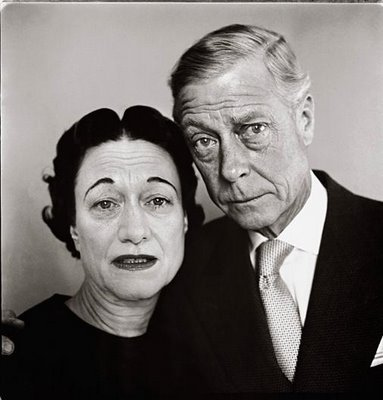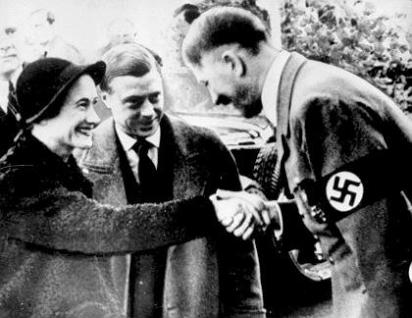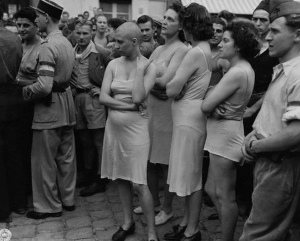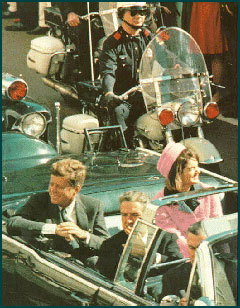
Self-Portrait by Richard Avedon (1923-2004)
Photographer Annie Leibovitz doesn’t talk to her subjects when photographing them. “I certainly can’t talk to people and take pictures at the same time. For one thing, I look through a viewfinder when I work.” (1)
But famed photographer Richard Avedon had a different style. Leibovitz observed that Avedon “seduced his subjects with conversation. He had a Rolleiflex that he would look down at and then up from. It was never in front of his face” but next to him while he talked. (1)

Truman Capote, author of "In Cold Blood" and "Breakfast at Tiffany's" photographed by Richard Avedon in New York City, 1955.
In this way, Avedon got what he wanted from his sitter. According to writer Truman Capote, Avedon was interested in “the mere condition of a face.”

The Duchess and Duke of Windsor with one of their beloved pugs.
Some, though, felt that Avedon’s impulses had a cruel edge, showing the face in a harsh light. Here’s a case in point: In 1957, Richard Avedon scheduled a New York City appointment to photograph the Duke and Duchess of Windsor, formerly King Edward VIII of the United Kingdom and Wallis Warfield Simpson of Baltimore. The Windsors were very practiced at putting on happy, regal faces for the camera and Avedon anticipated that. As a royal pair, they were endlessly photographed since they had nothing better to do with themselves since the Duke abdicated the British throne in 1936, giving up crown and kingdom, and moving to France with Wallis.
But Avedon didn’t want that kind of stock photo of the royal pair. According to another fellow photographer, Diane Arbus, Avedon knew that the Windsors were avid dog lovers and would use this knowledge to cruel advantage.

Valet in livery of the Bois de Bologne, Paris home of the Duke and Duchess of Windsor with pugs Mr. Disraeli, Mr. Chu, Trooper, Imp, and Davy Crockett

In 1997, Sotheby's auctioned off the contents of the Paris home of the Duke and Duchess of Windsor. Included in their possessions were these pug pillows arranged at the foot of the Duchess' bed. Although Wallis, the Duchess, was fastidious about cleanliness, she allowed the pugs to sleep in the bed with her. "“Paper money for the Duchess was either ordered new and crisp from a bank or wash cleaned and ironed by the housemaids; coins were always washed. Each evening, just before dinner was served, two maids could be found carrying bedsheets through the halls by their corners; the bed linens, having just been ironed, were destined for the rooms of the Duke and Duchess. Wallis could not stand wrinkles in her bed….Once the bed was made, a plastic sheet was spread atop the satin eiderdown so that the pugs could climb onto the bed with Wallis; there she would feed them the hand-baked dog biscuits prepared fresh each day by her chef. Usually the pugs slept on the bed with her, although the Duke’s favorite might disappear through the boudoir to his own spot at the foot of his master’s bed.” The Duchess of Windsor: The Uncommon Life of Wallis Simpson by Greg King
This is what he did: When Avedon arrived at the appointment to photograph the Windsors, he got them seated just as he wanted them then told them a lie. He explained how, on his way to meet them, his taxi had accidentally run over a dog in the street and killed it. As the Windsors flinched with sympathetic horror, Avedon clicked the shutter – and caught their expression. Here is that photo.

The Duchess and Duke of Windsor, New York, 1957. Photograph by Richard Avedon
The photograph caused an international sensation. Some said it made the Duchess look like a toad. British Royalists were outraged at the unflattering portrait. But Avedon defended lying to the couple to conceive the portrait, arguing that his photographs tended to show what people were really like.
If that was indeed true, the Windsors appeared to be two very dreadful people, a suspicion already aroused by their most ungracious familiarity with Adolf Hitler and his Nazi cronies in the pre WWII years. While living in an elegant Paris home provided by the French government on a lavish income bestowed on them by the British government, the Windsors regularly made pro-fascist remarks to the press as well as disparaging comments about their lack of loyalty to either of their host countries, France and Britain. They palled around with British traitors like Oswald Mosley and wife Diana Mitford in the French countryside until the Duke’s brother, the reigning King George VI of the United Kingdom got wise to the danger and shipped them off to the Bahamas for the duration of the war.
Avedon once remarked that the Windsors loved dogs more than they loved Jews.
(1) Leibovitz, Annie. Annie Leibovitz at Work. New York: Random House, 2008.
Readers: For more posts on this site on Annie Leibovitz or the Duke and Duchess of Windsor, scroll down the right sidebar: Categories: People.

























